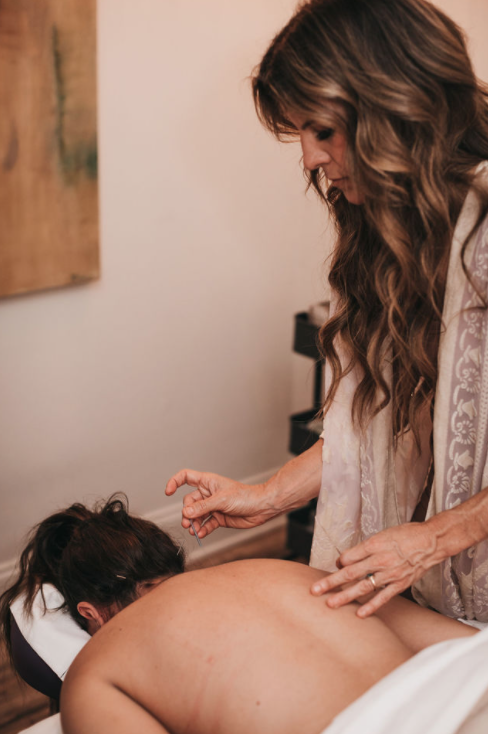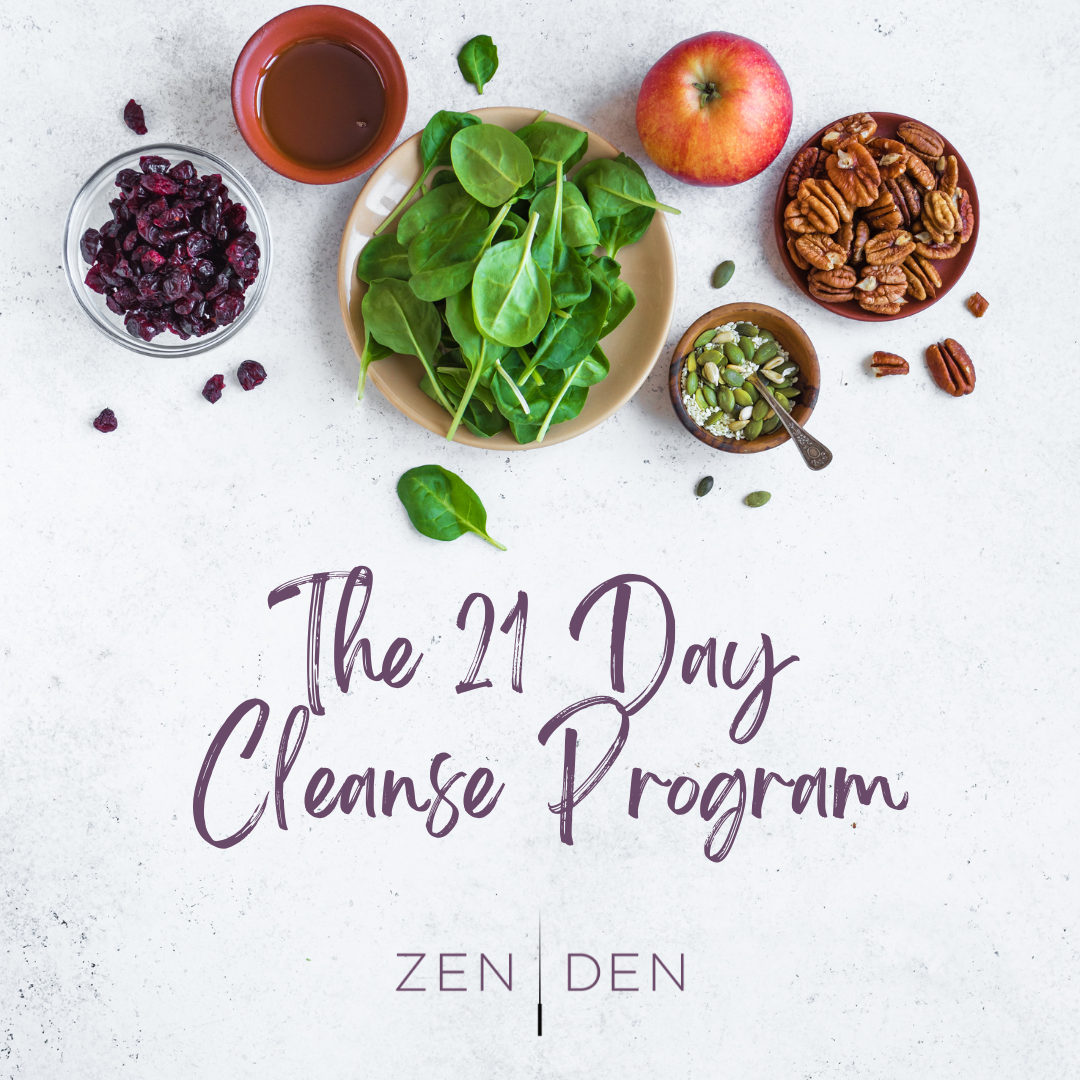WHAT DOES THE 21 DAY PROGRAM CONSIST OF?
This program emphasizes whole, organic, non-genetically modified foods (especially fruits and vegetables) that provide the vitamins, nutrients, enzymes and antioxidants the body needs for detoxification, as well as Standard Process’ whole food purification supplements that work synergistically to give the body the resources it needs to purify and rebuild itself naturally. The program is broken into three distinct phases described below. You will start with a transition period followed by a 21-day restricted diet. The 21-day program is divided into two parts. The first 10 days will consist of fruits and vegetables only, supported by nutrition shakes and whole food supplements. The second part, days 11-21, will see the addition of lean meat and fish, along with vegetables, fruits and supporting shakes and whole food supplements. After completing the 21-day purification, the focus of phase III is maintaining this healthy lifestyle for the long haul.
What Results Can I Expect from this Cleanse?
Improved weight management
Increased energy/vitality
Better Digestion
Less Bloating
Clearer Thinking
Clearer Skin
Shinier Hair
Disappearance or lessening of certain inflammatory conditions..pms, digestive, joint pain, etc.
Improved Sleep
WHICH FOODS WILL I HAVE TO AVOID?
Alcohol, caffeine, tobacco, or other stimulants. Dairy, Eggs, Grains (wheat, rye, barley, corn, rice, bran, blur, couscous and semolina), Nuts, Processed or refined foods, shellfish and soy.
WHY IS CORN NOT RECOMMENDED?
Corn is NOT a vegetable but a grain. Like many grains, it is a common allergen.
WILL I HAVE TO EXERCISE?
Daily exercise is required. This will enhance weight loss and stimulate detoxifying sweat. A minimum of 30 minutes daily up to six days a week is required. Staying active is important. Continue all hobbies and focus on activities that tune your body, mind and soul like walking, cycling, Tai Chi, Yoga and Pilates.
CAN I PARTICIPATE IN THE PROGRAM IF I CANNOT start on June 12th?
Absolutely! This cleanse is packaged up virtually for you to begin at anytime, just pick up your cleanse kit, we’ll send you the videos are you can get started whenever you’d like.
Is there a meeting I need to attend in person?
No, all the instructional videos are available online.
DO I HAVE TO BE A PATIENT?
No! Spouses, friends of patients, and other family members can participate as well.
WHAT IF I LIVE OUTSIDE OF SLO COUNTY?
No problem! The supplies can be shipped. Contact the office for more details.
WHAT DOES THE PROGRAM COST?
The program cost is $424 but is currently onsite until June 12th for $349!
This programincludes:
All of the supplements and shakes needed for the 21-day purification program
A written program manual
Direct email access to Dr. Hamilton and her guidance.
3 Instructional Videos by Dr. Michelle to ensure your sucess
A pdf guide containing Dr. Michelle’s go-to recipes for this cleanse.
One $60 gift card to be used on any products or services at Zen Den.
One ear seed application
PLUS, by skipping the $4 Starbucks latte, dining out less, snacking less, and cutting out the alcohol and sodas, most people will actually SAVE money during the program!
DOES INSURANCE PAY FOR THE PROGRAM?
No. Payment for the program must be made by cash, credit card, or check in advance unless special arrangements have been made with Dr Hamilton. In some cases, IRS or employer medical spending accounts (Flex Programs) may be used.
ARE THERE REFUNDS?
Yes, in some cases the cost of the program may be refundable in whole or in part. Cases of unforeseen allergies, rare complications that result in the participant being unable to finish, or if asked to stop by a physician, a refund may be issued. If a participant decides for other reasons to end the program prematurely, unused, unopened product may be refunded at the discretion of Dr. Hamilton.
HOW DOES THE PURIFICATION PROGRAM DIFFER FROM WEIGHT LOSS PLANS?
Popular, commercial diet plans often consist of processed foods and do not contain components of purification. The purification program is in fact not a weight-loss centered diet at all. Although weight loss is a desired and common side-effect of participation, it is not the focus. Weight-loss without purification still leaves the need for detoxification and nutritional support. This program is focused on creating habits of healthy eating that encourage a healthier lifestyle.
HOW MUCH WEIGHT WILL I LOSE?
The average person can be confidently assured in a weight loss of 2-3 pounds a week with strict adherence to the program and with no sense of deprivation. However, I will forbid the use of scales during the program. As with most valid diets, it is not uncommon for you to gain weight in the first days of the program. Scale watching is akin to watching water boil – pointless. Just as water always boils, you will lose weight on this program. I also teach that weight is irrelevant to begin with. Body image and body composition are where true health lie. A healthy ratio of fat to lean muscle, and how you perceive your body is healthy – not a number on a scale. Scale watching leads to failure. Stop doing it and focus on your health!
ARE THERE SIDE EFFECTS WHILE ON THE PROGRAM?
Reactions can occur and should be expected. In fact, this is generally a good thing! Examples include but are not limited to increased sweating, increased urine and bowel movements, urine color and odor changes, and mild flu-like symptoms as the body is flushing toxins. This is natural as the body starts to burn fat and normal insulin levels drop. This should level out after a few days. Increased bowel movements are a normal response to increased toxin clearing. Diarrhea can also occur early on for the same reason. Should diarrhea persist, let me know as chronic diarrhea can be serious. On the opposite end of the spectrum, constipation can also occur in response to increased toxin elimination.
In rare occasions, skin break-outs can occur because the skin is a major organ of toxin elimination. Don’t fret, this should pass quickly. If large areas of rash appear, let me know. This too is probably just your body attempting to clear away stored toxins and move them out to the urine, stool and sweat as it is supposed to do. In some instances, some people will experience a throbbing sensation in the head, generalized aches, itchy skin and even a little fatigue. These symptoms are a normal response to cleaning away poisons and should pass after the first few days. Once they pass, hold on, you should start to feel better than you have in years! For acute control, try using naturally low-caffeine Green tea in the mornings and after lunch. Also try eating smaller meals more often to balance blood sugar. Report any anaphylaxis-type reactions immediately (fever, swelling, rash)! These are extremely rare on this program.
WHAT DO I DO IF I CANNOT SWALLOW PILLS EASILY?
Empty the contents of the capsules into your daily shakes. Tablets may be crushed and used in the same fashion. Chewing the supplements is not recommended.
CAN I PARTICIPATE IF I AM A DIABETIC?
Yes! First, consult Dr. Hamilton before starting the program so he can tailor the program for you. Diabetics actually benefit from the program as it is designed to help balance blood sugar metabolism. If you are on insulin, always check blood sugar before injecting. You will be asked to eat smaller meals more frequently. Blueberries, Sweet Potatoes, and Lentils (1 cup/day) will be used to support your blood sugar. Gymnema tablets will be used to increase insulin sensitivity.
HOW OFTEN CAN I DO THE STANDARD PROCESS 21-DAY PURIFICATION PROGRAM?
The program can be done up to twice a year. I recommend early in the year and in the summer or every 6 months.
CAN I PERFORM THE PURIFICATION DIET IF I TAKE MEDICATIONS?
Yes, there are no known drug interactions.
SHOULD I TAKE MY CURRENT VITAMIN SUPPLEMENTS WHILE ON THE PROGRAM?
In most cases, no because the program will ensure all nutritional needs are met. Also, synthetic vitamins should be avoided on the program in lieu of the whole food Standard Process supplements.
WHERE CAN I BUY STANDARD PROCESS PRODUCTS?
Standard Process supplements, shakes and bars are sold exclusively through health care professionals. The Zen Den stocks a full line of products in the office. If you are traveling, or for friends and family out of town, you can locate a physician in that area by going to www.standardprocess.com






















